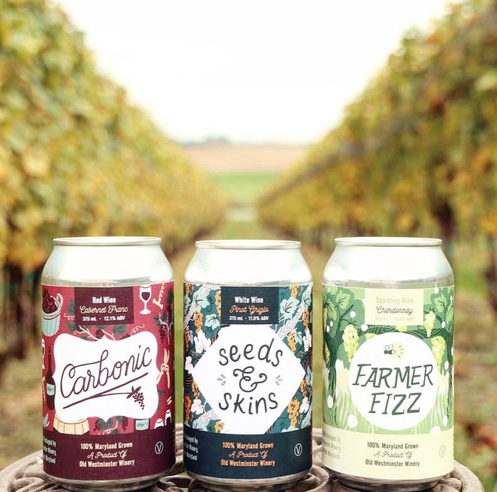
Retail sales of wines in cans continue to roll forward and gain momentum. Introduced in the U.S. more than a decade ago, canned wines began gaining noticeable acceptance the past few years as more millennials reached legal drinking age. “Every wine in a can is selling right now,” says Dave Shierling, wine department manager at Wilbur’s Total Beverage Wine & Spirits in Fort Collins, Colorado. “Canned wines are here to stay.”
Retailers are attributing segment growth primarily to millennials and are creating shelf space to capitalize. Viscount Wines & Liquor in Wappingers Falls, New York began selling two Barefoot Refresh canned wine spritzers in 2016. Peter Landolt, the store’s wine director, was initially skeptical but listened to his retail instincts. “When my hair was down to my waist, I drank wine out of wine skins, so I thought it was worth giving it a try to see the reaction,” says Landolt. “The trend seems to be the new ones all have a little bit of fizz.”
Viscount currently offers 22 SKUs of 11 canned wine brands. All are trending at double-digit growth rates. The store recently created a new retail display featuring canned wines. Gallo’s Refresh ($8 a 4-pack of 8.4-ounce cans) is Viscount’s No. 1 segment seller. Château Maris, an organic Languedoc Pinot Noir ($15 a 4-pack of 250-ml. cans) and rosé ($18 a 4-pack), is No. 2. Oregon’s Underwood Pinot Noir ($7 a 375-ml. can) is No. 3.
Wilbur’s began carrying Underwood ($6 a 375-ml.) in 2015 and increased its offerings this May to ten brands and 25 SKUs in cans. Leaders include Infinite Monkey Theorem ($16 a 4-pack of 187-ml. cans) and Scarpetta Frico Frizzante ($3 a 187-ml. can). “We just did some shifting to make space for a lot more cans and we filled that up pretty quickly,” says Shierling. “Every new can I see, I will have to consider if I have room for it. It is the struggle retailers have.”

License and control states are seeing segment growth. In Pennsylvania, the largest wine sales control state, canned wine sales increased 90.3% on units and 56.8% on dollar sales in the first half of 2018 compared to the first six months of 2017, according to the Pennsylvania Liquor Control Board (PLCB). “Customers understand alternatively packaged wines can taste good and be of good quality,” says PLCB press secretary Shawn Kelly. The PLCB is tailoring its Fine Wine & Good Spirits stores with shelf sections dedicated to small-sized items like wines in cans. “Keeping these products together seems like a natural fit, and our customers have no trouble finding them on our shelves,” Kelly notes.
Among different wine packaging, the can has the highest growth rate. For the 52 weeks ended September 30, 2017, retail sales of canned wine soared 59.5% from a small base (approaching 1% category share) compared to 3.3% growth for wine in 750-ml. bottles (72.5% category share), according to The Nielsen Company. Tetra pack wine (up 19.2%/1% share) and premium boxed wine (up 15.6%/3.1% share) also posted double-digit growth, while 187-ml. glass wine offerings (1.1% share) inched up 3.6%, and the 1.5-liter bottle (15.4% share) decreased (-1.2%) retail volume, according to Nielsen.
Look for canned wine sales to continue rolling into new territory. “The future of wine in the can is going to be dependent on its continued improvement,” says Landolt. “If the quality is good, it will continue its momentum.”